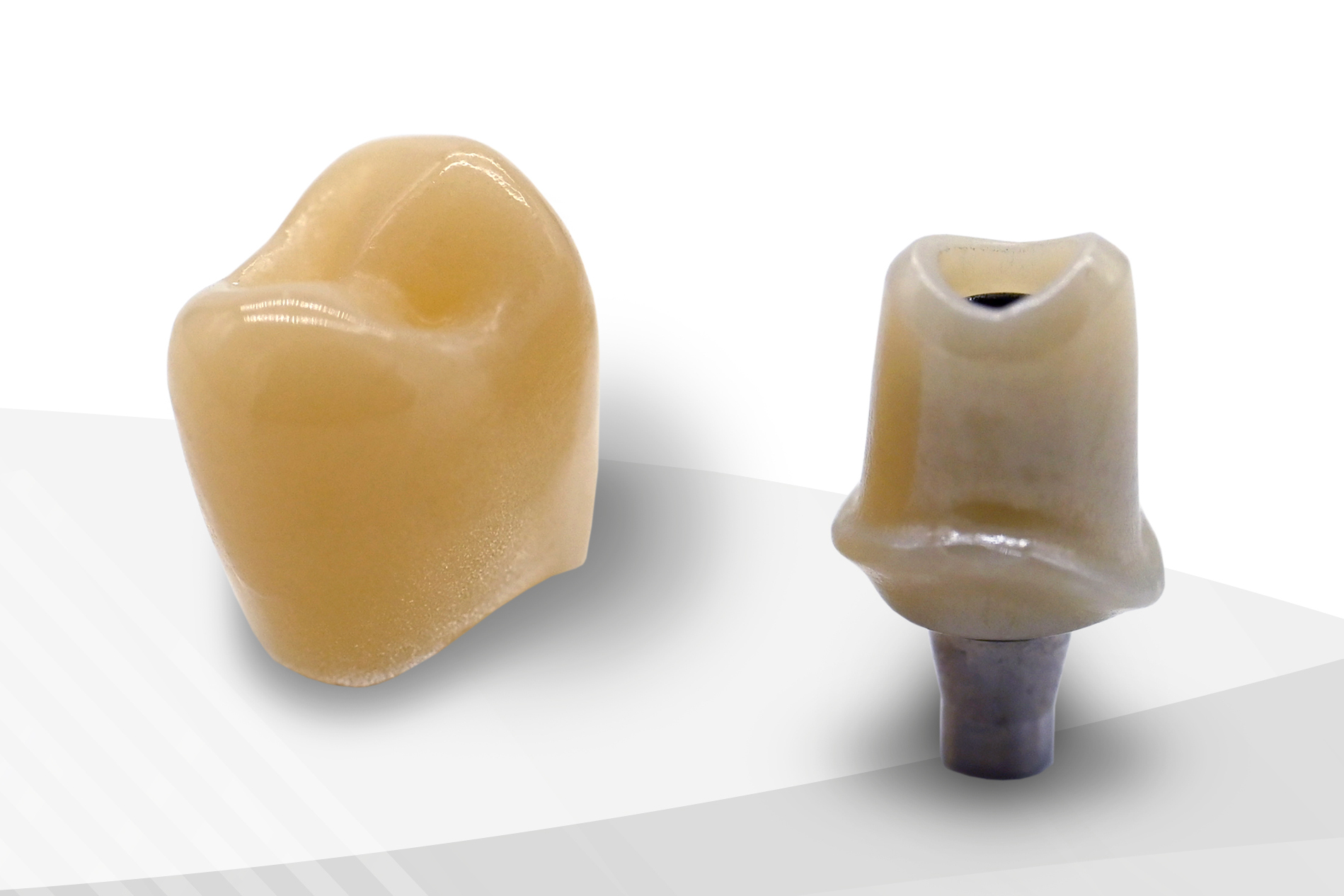(Hybrid) abutments – the pillars of dental implant technology
An implant restoration basically consists of three elements: the implant itself, the abutment and the crown. The abutment is the link between the implant and the crown, which transmits the force from the crown, for example through chewing movements, to the implant and from there to the jawbone. This makes the abutment a crucial component in terms of power transmission, positional security, tissue shaping and aesthetics.
Enormous forces act on teeth or dentures when chewing, which is why stability is an important criterion when it comes to choosing the right restoration. Now patients also want to feel comfortable with their dentures. In addition to stability and function, aesthetics also play a major role in well-being. This is where hybrid abutments come into play. If stability and function are the sole considerations, one would always use one-piece abutments made of titanium for implant restorations. The material corresponds to that of the implant anchored in the jawbone, is stable and biocompatible. However, due to its color and opacity, it is not necessarily the most esthetic.
Definition of hybrid abutments
Hybrid abutments combine both: good cohesion with the implant thanks to its titanium base and the aesthetics of a ceramic coping, since the abutment to be bonded to the titanium base can be as aesthetic in color and translucency as the material standard currently allows in the sector.
How are Hybrid Abutments designed?
Accordingly, the hybrid abutment is composed of two parts: The metallic abutment base - the standard here is titanium - and a custom-manufactured abutment made of high-performance ceramics, which is bonded to the base. Generally, biocompatible zirconium oxide is used for the crown, but material variations such as lithium(di)silicate, nanocomposite or gold are also possible. Since lithium(di)silicate is very sensitive and brittle, composite is usually used for interim restorations, and gold has just as little translucency as titanium and therefore shimmers darkly through the crown, which is not recommended from our point of view.
Advantages of hybrid abutments
Hybrid abutments combine the advantages of one-piece, purely metallic abutments with those of one-piece, purely ceramic abutments. The titanium base guarantees high material strength and prevents abrasion of the metal implant during micro-movements. The ceramic structure has aesthetic advantages and is used to hold the hybrid abutment crown.
For comparison: one-piece abutments – metallic, ceramic
As already mentioned above, there are also one-piece abutments in addition to the hybrid abutments, i.e. two-piece abutments. For a quick understanding here is a short digression:
-
One-piece metallic titanium abutments have a high mechanical stability, but they have a significant aesthetic defect: there is a risk that dark metal will shine through and cloud the visual result.
-
Due to their tooth-like color, one-piece ceramic abutments do not have this blemish, but the stability and breaking strength are significantly lower. In addition, with one-piece ceramic abutments, metal abrasion can occur between the ceramic abutment and the implanted titanium sleeve.
Hybrid abutments combine the advantages of both variants of one-piece abutments while avoiding the respective disadvantages. Hybrid solutions are available for single-tooth implants, implant bars and implant bridges in the anterior and posterior regions.
Disadvantages of hybrid abutments
Connecting dissimilar materials under load is anything but trivial and generally a possible weak point in the long term due to age-related fractures. The abutment and titanium base can be bonded with adhesives or joined using techniques such as laser welding and soldering, depending on the abutment material. All methods are comparatively complex and require a lot of experience. Long-term stability is only guaranteed if the work protocol of the selected connection technology is followed exactly. Of course, one-piece abutments do not have this shortcoming.
CONCLUSION
Hybrid abutments combine the advantages of established titanium abutments with the advantages of one-piece ceramic abutments: high stability combined with excellent aesthetics. Hybrid abutments are priced competitively with conventional abutments. In the long term, the connection of two dissimilar materials could prove to be a possible predetermined breaking point and thus a contraindication.
